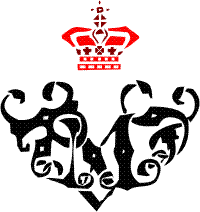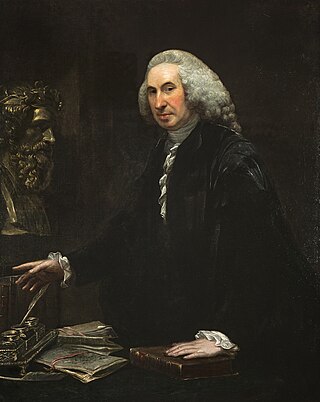
William Cullen was a Scottish physician, chemist and agriculturalist, and professor at the Edinburgh Medical School. Cullen was a central figure in the Scottish Enlightenment: He was David Hume's physician, and was friends with Joseph Black, Henry Home, Adam Ferguson, John Millar, and Adam Smith, among others.

John Fothergill FRS was an English physician, plant collector, philanthropist and Quaker. His medical writings were influential, and he built up a sizeable botanic garden in what is now West Ham Park in London.
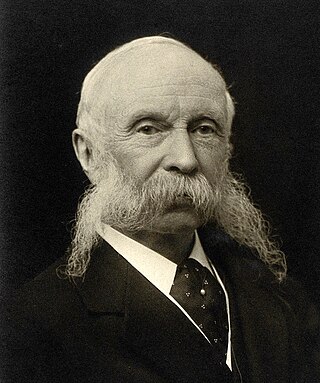
Sir James Crichton-Browne FRS FRSE was a leading Scottish psychiatrist, neurologist and eugenicist. He is known for studies on the relationship of mental illness to brain injury and for the development of public health policies in relation to mental health. Crichton-Browne's father was the asylum reformer Dr William A.F. Browne, a prominent member of the Edinburgh Phrenological Society and, from 1838 until 1857, the superintendent of the Crichton Royal at Dumfries where Crichton-Browne spent much of his childhood.

Benjamin Waterhouse was a physician, co-founder and professor of Harvard Medical School. He is most well known for being the first doctor to test the smallpox vaccine in the United States, which he carried out on his own family.

Thomas Percival was an English physician, health reformer, ethicist and author who wrote an early code of medical ethics. He drew up a pamphlet with the code in 1794 and wrote an expanded version in 1803, Medical Ethics; or, a Code of Institutes and Precepts, Adapted to the Professional Conduct of Physicians and Surgeons in which he coined the expression "medical ethics". He was a founding subscriber of the Portico Library in Manchester and a pioneering campaigner for public health measures and factory regulation in the city.
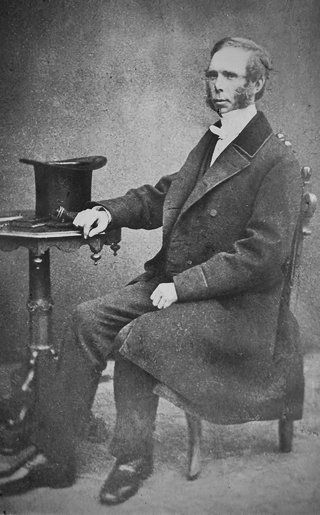
John Coldstream (1806–1863) was a Scottish physician.
The University of Edinburgh Medical School is the medical school of the University of Edinburgh in Scotland and the United Kingdom and part of the College of Medicine and Veterinary Medicine. It was established in 1726, during the Scottish Enlightenment, making it the oldest medical school in the United Kingdom and the oldest medical school in the English-speaking world.

Hugh Francis Clarke Cleghorn was a Madras-born Scottish physician, botanist, forester and land owner. Sometimes known as the father of scientific forestry in India, he was the first Conservator of Forests for the Madras Presidency, and twice acted as Inspector General of Forests for India. After a career spent in India Cleghorn returned to Scotland in 1868, where he was involved in the first ever International Forestry Exhibition, advised the India Office on the training of forest officers, and contributed to the establishment of lectureships in botany at the University of St Andrews and in forestry at the University of Edinburgh. The plant genus Cleghornia was named after him by Robert Wight.

The Plinian Society was a club at the University of Edinburgh for students interested in natural history. It was founded in 1823. Several of its members went on to have prominent careers, most notably Charles Darwin who announced his first scientific discoveries at the society.

Dr William Alexander Francis Browne (1805–1885) was one of the most significant British asylum doctors of the nineteenth century. At Montrose Asylum (1834–1838) in Angus and at the Crichton Royal in Dumfries (1838–1857), Browne introduced activities for patients including writing, group activity and drama, pioneered early forms of occupational therapy and art therapy, and initiated one of the earliest collections of artistic work by patients in a psychiatric hospital. In an age which rewarded self-control, Browne encouraged self-expression and may therefore be counted alongside William Tuke, Vincenzo Chiarugi and John Conolly as one of the pioneers of the moral treatment of mental illness. Sociologist Andrew Scull has identified Browne's career with the institutional triumph of nineteenth century psychiatry.
"Browne was one of the reformers of the asylum care of the insane whose improvements and innovations were chronicled in his annual reports from The Crichton Royal Institution, but who in addition published almost on the threshold of his career a sort of manifesto of what he wished to see accomplished...." Richard Hunter and Ida Macalpine (1963) Three Hundred Years of Psychiatry 1535–1860, page 865.
"In language all-too-revelatory of the political issues at stake, [Browne] denounced 'he who refuses the aid of medicine....as he who doubts the efficacy of moral agents'....In the final analysis, one might abandon the millenarian expectations on which Victorian asylumdom had been mistakenly constructed - but not betray one's commitment to the medical monopolization of the treatment of the mad...." Andrew Scull (1991) The Asylum As Utopia: W A F Browne and the Mid-Nineteenth Century Consolidation of Psychiatry

Andrew Duncan, the elder FRSE FRCPE FSA (Scot) was a British physician and professor at the University of Edinburgh. He was joint founder of the Royal Society of Edinburgh. As first proposer of an asylum in Edinburgh he gives his name to the Andrew Duncan Clinic which forms part of the Edinburgh City Hospital.

John Syer Bristowe (1827–1895) was an English physician.

Robert Cleghorn MD FRSE FFPSG PRMS was a Scottish physician and pharmacologist.
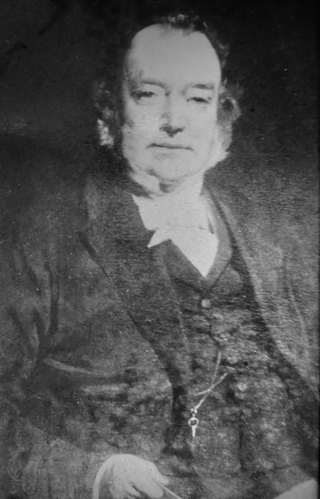
Dr William Seller FRSE PRCPE was a Scottish physician and botanist. From 1848 to 1850 he was President of the Royal College of Physicians of Edinburgh.
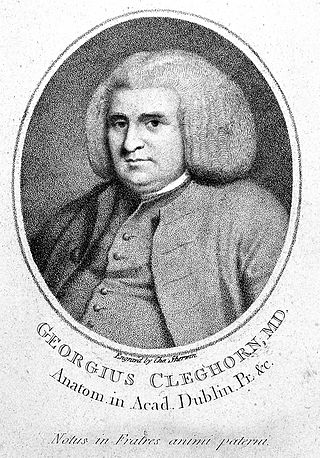
George Cleghorn (1716–1789) was a Scottish physician. He is now known as a careful and accurate observer of fevers, who was able to clarify ways in which malaria complicated the way they presented.
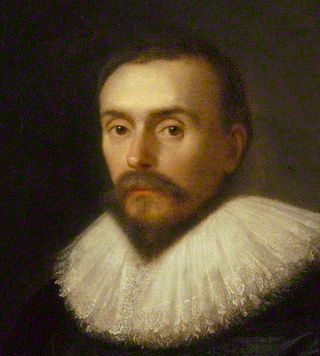
The Harveian Society of London, named after the physician William Harvey, is a medical society and registered charity, founded in 1831. Doctors assemble regularly at the Medical Society of London, Chandos Street, Cavendish Square to converse and discuss medical matters through the medium of lectures and conferences.
Extramural medical education in Edinburgh began over 200 years before the university medical faculty was founded in 1726 and extramural teaching continued thereafter for a further 200 years. Extramural is academic education which is conducted outside a university. In the early 16th century it was under the auspices of the Incorporation of Surgeons of Edinburgh (RCSEd) and continued after the Faculty of Medicine was established by the University of Edinburgh in 1726. Throughout the late 18th and 19th centuries the demand for extramural medical teaching increased as Edinburgh's reputation as a centre for medical education grew. Instruction was carried out by individual teachers, by groups of teachers and, by the end of the 19th century, by private medical schools in the city. Together these comprised the Edinburgh Extramural School of Medicine. From 1896 many of the schools were incorporated into the Medical School of the Royal Colleges of Edinburgh under the aegis of the RCSEd and the Royal College of Physicians of Edinburgh (RCPE) and based at Surgeons' Hall. Extramural undergraduate medical education in Edinburgh stopped in 1948 with the closure of the Royal Colleges' Medical School following the Goodenough Report which recommended that all undergraduate medical education in the UK should be carried out by universities.
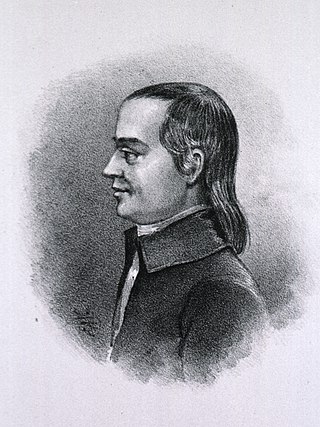
Samuel Powel Griffitts was an American physician, widely regarded as the founder, in 1786, of the Philadelphia Dispensary. He was an early member of the American Philosophical Society, elected in 1785.
John Balmanno FRCSPG (c.1770–1840) was an 18th/19th century Scottish surgeon of high-standing in the city of Glasgow. He served two terms as President of the Faculty of Physicians and Surgeons in Glasgow.
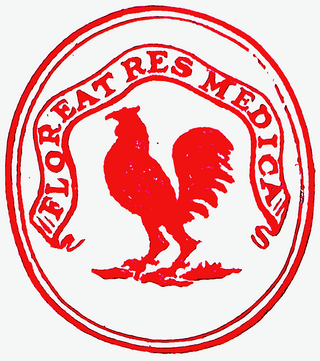
The Aesculapian Club of Edinburgh is one of the oldest medical dining clubs in the world. It was founded in April 1773 by Dr. Andrew Duncan. Membership of the club is limited to 11 Fellows of the Royal College of Physicians of Edinburgh and 11 Fellows of the Royal College of Surgeons of Edinburgh. 'Extraordinary Membership' is given to members aged over 70 years. The club was established during the Scottish Enlightenment to encourage convivial relations between Fellows of the two Colleges and to stimulate intellectual discussion. The Club dinners are held in the New Library of the Royal College of Physicians of Edinburgh on the 2nd Friday of March and October each year. The principal guest at each dinner is invited to give a short talk on a non-medical subject and this is followed by a round-table discussion.
